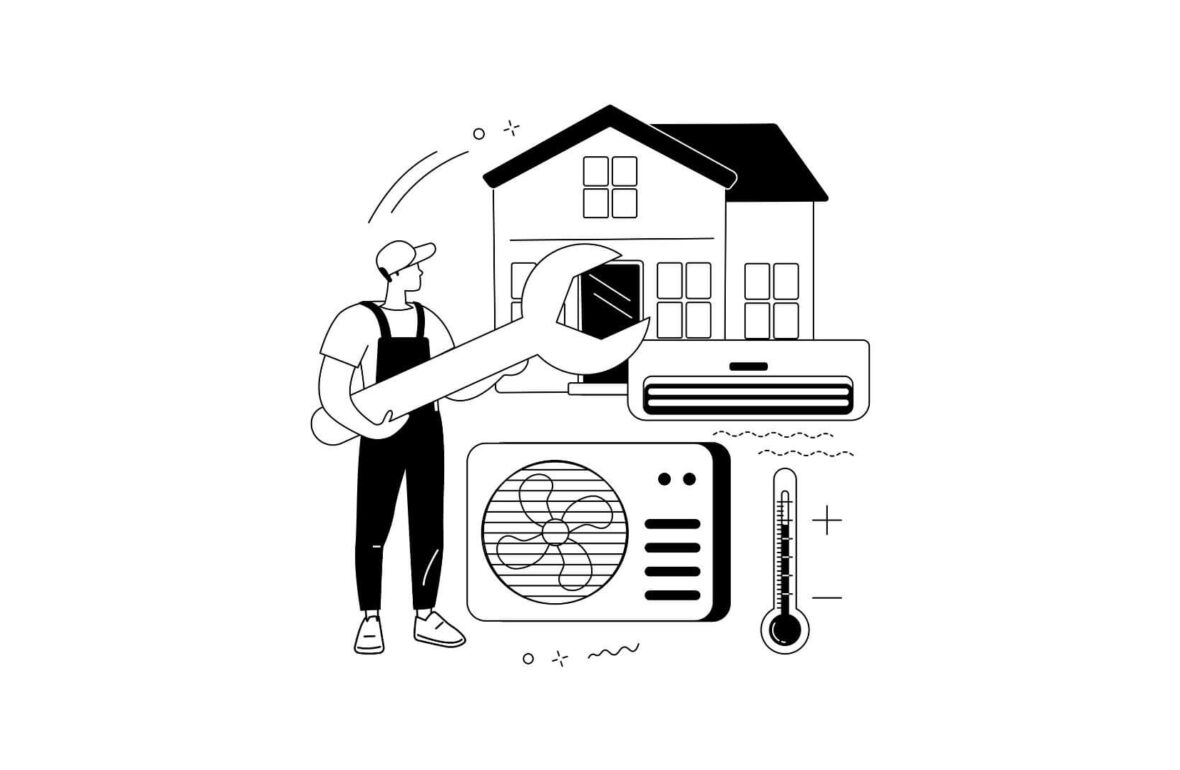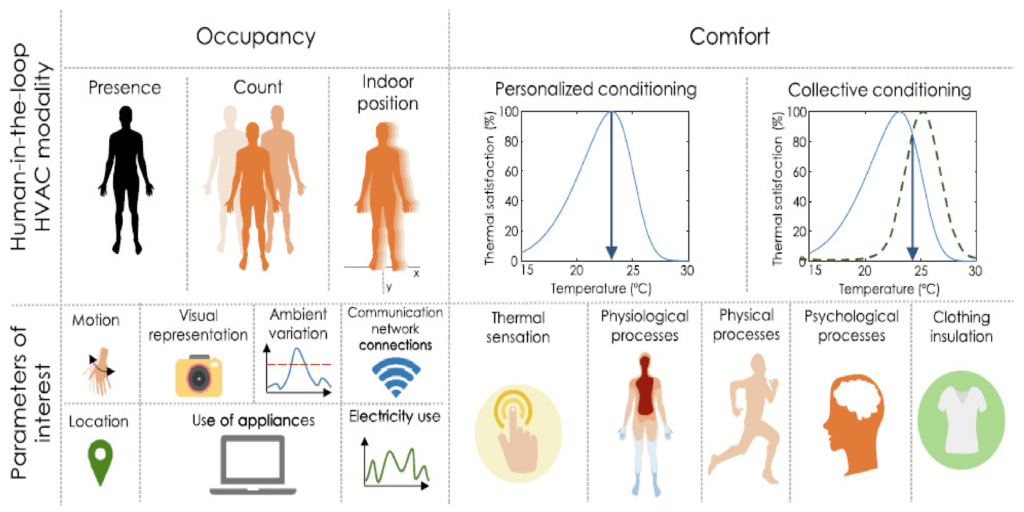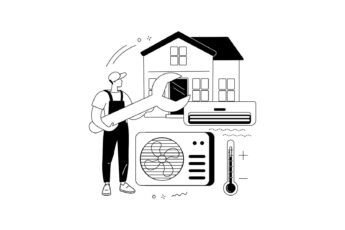
Introduction To Home HVAC Systems
Welcome to our blog, where we dive into the world of home HVAC systems and explore innovative approaches that can revolutionize your comfort and savings. If you’re tired of constantly adjusting thermostats, feeling chilly drafts, or cringing at sky-high utility bills, then this article is for you. Today, we introduce the Integrated Systems Approach – a game-changing method that promises improved comfort and substantial cost savings in your home HVAC system. So buckle up as we embark on this exciting journey towards a more comfortable and efficient living space!
The Importance Of Comfort In Homes

When it comes to our homes, comfort is key. We spend a significant amount of time in our living spaces, so it’s important that they provide us with a sense of relaxation and well-being. After all, who wants to come home after a long day at work only to feel uncomfortable and restless?
Comfort goes beyond just physical well-being. It encompasses the overall ambiance and atmosphere of our homes. From the temperature and humidity levels to the air quality and noise levels, every aspect plays a role in creating an environment where we can truly unwind.
One area where comfort is particularly crucial is in our HVAC systems. A properly functioning heating, ventilation, and air conditioning system can make all the difference when it comes to creating a comfortable home environment.
In hot summer months or chilly winter days, having an efficient HVAC system ensures that we can maintain optimal temperatures indoors without feeling too hot or too cold. This allows us to enjoy activities at home without discomfort or having to rely on additional appliances like fans or space heaters.
Additionally, proper ventilation helps remove stale air from our homes while bringing in fresh outdoor air. This not only improves indoor air quality but also helps regulate humidity levels for better breathing conditions.
Noise reduction is another factor that contributes significantly to comfort in homes. Noisy HVAC systems can be disruptive and prevent us from fully relaxing or getting restful sleep at night.
Investing in high-quality HVAC systems designed for comfort ensures that we have control over essential elements such as temperature regulation, airflow management, noise reduction, and indoor air quality – all contributing factors for creating a cozy haven within your own four walls.
By prioritizing comfort through an integrated approach towards home HVAC systems’ design and installation process homeowners are able improve their overall well-being by ensuring optimal conditions throughout their living spaces
The Traditional Approach To Home HVAC Systems

When it comes to home HVAC systems, the traditional approach has been followed for many years. This approach typically involves installing separate heating and cooling units in a home, such as furnaces and air conditioners. While this method may provide basic comfort, it often falls short in terms of efficiency and overall performance.
One of the main drawbacks of the traditional approach is that these separate units operate independently of each other. This means that they are not able to communicate or coordinate their efforts in order to optimize energy usage or maintain consistent comfort levels throughout the home. As a result, homeowners may experience uneven temperatures or frequent temperature fluctuations from room to room.
Another issue with the traditional approach is its lack of integration with other systems in the home. For example, thermostats are typically used to control individual heating and cooling units separately. This can lead to inefficiencies if different areas of the house have conflicting temperature settings.
Furthermore, because these separate systems aren’t designed to work together seamlessly, they often require more maintenance and repairs over time. Each unit needs its own set of regular check-ups and tune-ups which can be costly and time-consuming for homeowners.
In addition, operating multiple independent HVAC units can lead to higher energy bills due to increased power consumption. When each system operates independently without coordination or optimization strategies like zoning controls or programmable thermostats – energy waste becomes inevitable as some areas might be unnecessarily overheated while others remain too cold for comfort.
While the traditional approach may have been widely adopted in homes across the country for many years now – it’s clear that integrated systems offer a superior solution when it comes improving both comfort levels as well as saving money on utility costs! So why settle for less when you can enjoy improved efficiency,
Keep reading our blog series on Integrated Systems Approach for Improved Comfort and Savings in Home HVAC where we will discuss how integrating various components into one seamless system brings about numerous benefits including enhanced comfort level, energy efficiency, and cost savings. Don’t miss out on the opportunity to
The Integrated Systems Approach

The Integrated Systems Approach is a holistic approach to home HVAC systems that takes into consideration the various components and functions of the system, as well as the interaction between them. Instead of treating each component separately, this approach focuses on how all the different parts work together to provide improved comfort and energy efficiency.
One key aspect of the Integrated Systems Approach is proper sizing and design. By accurately calculating heating and cooling loads based on factors such as insulation, windows, and occupancy, a more efficient system can be installed. This not only ensures that your home stays comfortable year-round but also helps to reduce energy waste.
Another important element is zoning. With zoning, you can divide your home into different areas or zones that can be heated or cooled independently. This means you have greater control over temperature settings in different parts of your home, resulting in personalized comfort while minimizing energy use.
Additionally, integrating smart thermostats and advanced controls into your HVAC system allows for better optimization and automation. These technologies continuously monitor indoor conditions and adjust temperature settings accordingly for maximum comfort with minimal energy consumption.
Furthermore, incorporating ventilation systems along with air purification technologies enhances indoor air quality by removing pollutants like dust particles, allergens, and volatile organic compounds (VOCs). This contributes to a healthier living environment for you and your family.
By taking an integrated systems approach to your home HVAC system, you can experience improved comfort while enjoying significant savings on energy bills. The benefits are numerous – from reduced maintenance costs due to optimized performance to lower carbon footprint thanks to decreased energy consumption.
Case studies have shown how homeowners who adopted this approach witnessed substantial improvements in their overall comfort levels while achieving remarkable savings on their monthly utility bills. Real-life examples demonstrate how integrating various components results in seamless operation and enhanced performance throughout the entire HVAC system.
If you’re looking for improved comfort along with long-term cost savings in your home’s HVAC system,HVAC System consider adopting an integrated systems approach. By considering all the components and their interaction, you can optimize performance
Benefits Of The Integrated Systems Approach

The integrated systems approach for home HVAC offers a range of benefits that can greatly improve both comfort and savings for homeowners. By integrating various components of the HVAC system, such as heating, ventilation, and air conditioning, into one cohesive unit, homeowners can experience enhanced performance and efficiency.
One major benefit of the integrated systems approach is improved energy efficiency. When all aspects of the HVAC system are working together seamlessly, it reduces wasted energy and ensures that each component is operating at its optimal level. This results in lower energy consumption and reduced utility bills.
Another advantage is enhanced comfort throughout the home. The integrated systems approach allows for precise control over temperature regulation in different areas or zones within the house. This means you can customize settings to suit individual preferences while also avoiding wasteful cooling or heating in unused spaces.
Additionally, this approach often includes advanced features such as smart thermostats or zoning controls. These technologies enable homeowners to remotely manage their HVAC system through mobile apps or online platforms. This not only adds convenience but also allows for better optimization based on occupancy patterns or external weather conditions.
Furthermore, an integrated systems approach can lead to increased durability and longevity of your HVAC equipment. With proper synchronization between all components, there is less strain on individual parts leading to fewer breakdowns and maintenance issues.
In conclusion (less than 150 words), adopting an integrated systems approach has numerous advantages when it comes to home HVAC systems. From improved energy efficiency to enhanced comfort control and extended equipment lifespan – these benefits make it a worthwhile investment for any homeowner looking to optimize their indoor climate while saving money on utilities bills
Case Studies And Real-Life Examples Of Improved Comfort And Savings
Let’s dive into some real-life examples that showcase the benefits of the Integrated Systems Approach for improved comfort and savings in home HVAC systems. These case studies provide tangible evidence of how homeowners have experienced enhanced comfort levels while enjoying significant energy savings.
In one case study, a family decided to upgrade their home HVAC system with an integrated approach. By integrating their heating, cooling, ventilation, and insulation systems, they were able to achieve optimal indoor temperature control throughout the year. With smart thermostats and zoning capabilities, they could customize temperatures in different areas of their home based on individual preferences.
The results were astounding. Their energy bills significantly decreased as they no longer wasted energy on heating or cooling unoccupied rooms. They also noticed a substantial improvement in air quality due to proper ventilation and filtration systems integrated into their HVAC setup.
Another example is a homeowner who implemented an integrated system that included solar panels for renewable energy generation. By harnessing solar power to supplement their traditional HVAC system, this homeowner was able to reduce electricity usage from the grid during peak demand periods.
This integration allowed them to not only save money but also reduce reliance on fossil fuels while contributing towards sustainability efforts. Plus, with advancements in technology allowing for remote monitoring and control of these integrated systems through smartphone apps or web portals, homeowners can easily make adjustments even when away from home.
These are just a couple of examples highlighting how an integrated systems approach can lead to improved comfort levels and significant savings for homeowners. By taking advantage of modern technologies and optimizing various components within the home HVAC system, it is possible to create an environment that maximizes both comfort and efficiency.
Implementing an Integrated Systems Approach can revolutionize your home’s HVAC system by providing personalized comfort while ensuring cost-effective operation. These real-life case studies demonstrate that by embracing innovation and leveraging advanced technologies available today, you too can experience enhanced comfort levels along with substantial energy savings. So why settle for a traditional approach when you can achieve
Conclusion And Recommendations For Homeowners
In today’s fast-paced world, where comfort and energy efficiency are top priorities for homeowners, an integrated systems approach to home HVAC is the way forward. By combining multiple components of your HVAC system into a seamless whole, you can achieve improved comfort levels while also saving on energy costs. This holistic approach takes into account factors such as insulation, ventilation, heating, cooling, and air quality to create a harmonious indoor environment.
By adopting an integrated systems approach for your home HVAC system, you can enjoy several benefits. It ensures optimal performance by optimizing each component of the system to work together seamlessly. This means that you get consistent temperature control throughout your home without any hot or cold spots. It allows for better energy efficiency by reducing wasted energy through smart controls and automation.
Another advantage of this approach is enhanced indoor air quality. By integrating ventilation systems with other components of the HVAC system, you can ensure proper airflow and filtration throughout your home. This helps in removing pollutants and allergens from the air you breathe.
Real-life examples have shown how this integrated approach has transformed homes into comfortable havens while significantly reducing energy consumption and utility bills. Homeowners have reported improved temperature regulation across different areas of their homes along with reduced reliance on artificial heating or cooling methods.


